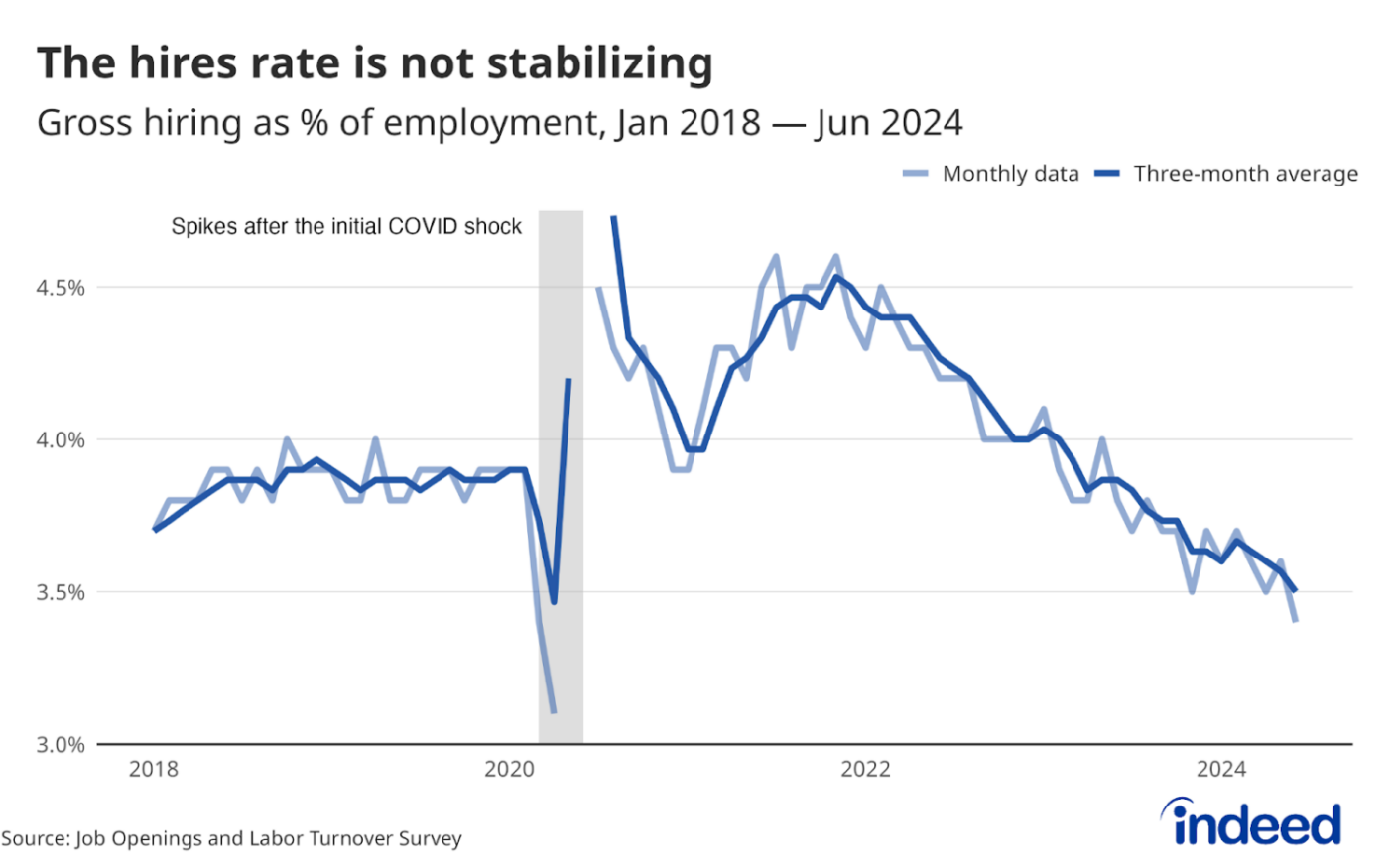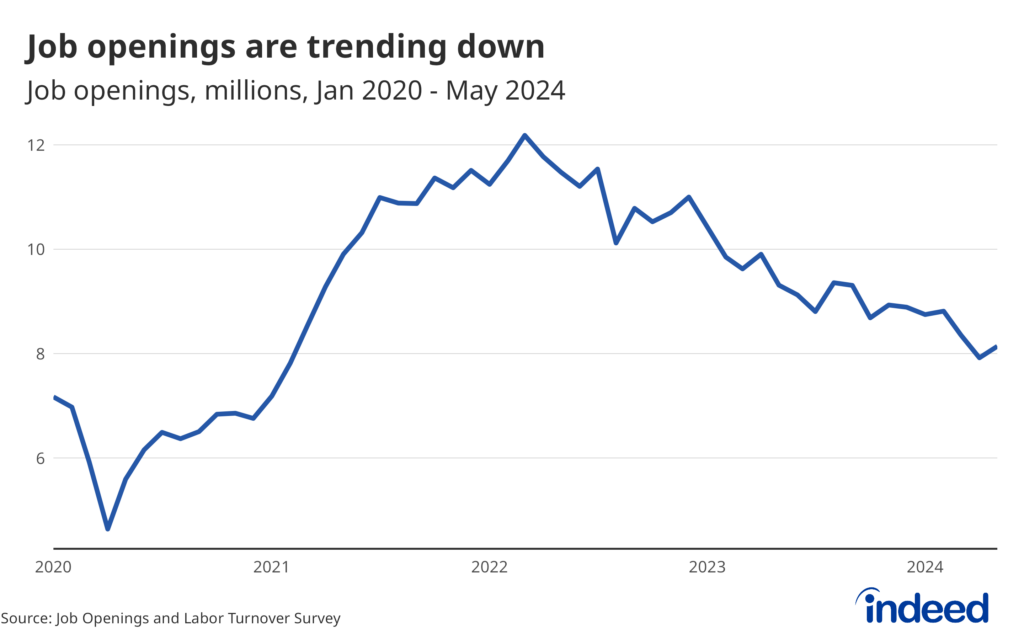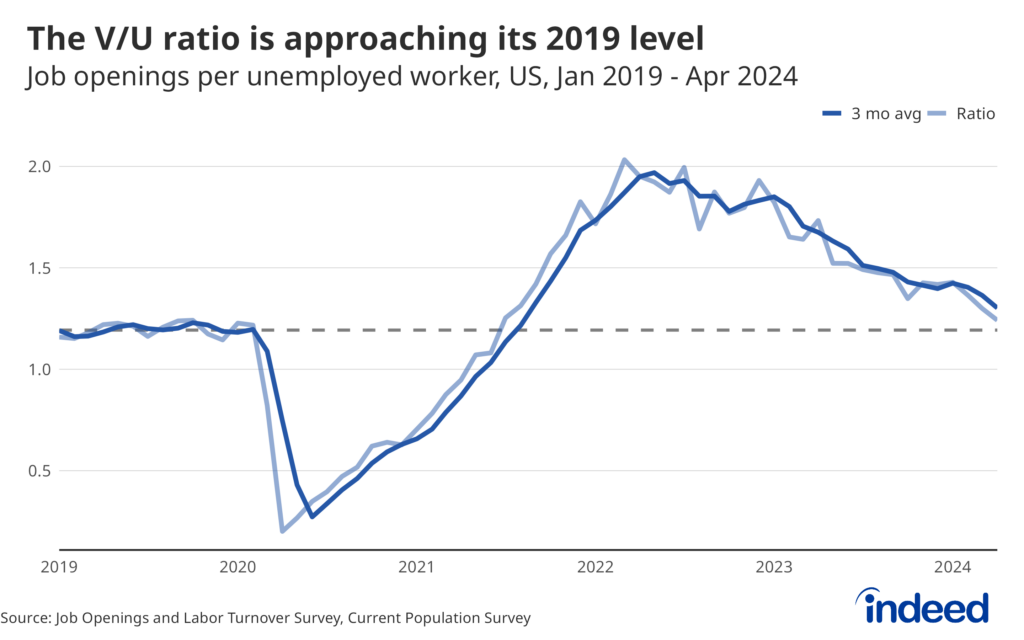Key points:
- The June JOLTS report won’t bring comfort to anyone looking for signs of stabilization in the US labor market.
- Job openings held steady in June, with 8.2 million open positions available at the end of the month.
- However, the hires rate and the quits rate are trending down, a concerning trajectory given their relatively low levels.
For those looking for further signs of stabilization in the labor market, this latest JOLTS report won’t provide much comfort. Outside the ongoing stability in headline openings, hiring has fallen dramatically and continues to slide, falling to levels last seen in March 2020. And quits remain exceptionally low.
It’s difficult to make too much of one month of data, and some headline trends still look largely fine. The jury is still out, but continued deterioration — when the margin for error is already slim and getting slimmer — would be a problem.
Job openings are the one series looking stable right now, with open positions essentially flat over June. Openings are still elevated compared to their pre-pandemic baseline, but the ratio of openings to unemployment is holding steady at pre-pandemic levels. Yet the data elsewhere in the report suggests the labor market might not be as stable. The hires rate dropped to its lowest level since March 2020 and into a range last seen in 2014, when the labor market was weak. However, the headline decline was driven by big swings in a few sectors, so don’t hold too firm to one month of data. It might get revised away.
The recent trend in the quits rate is also somewhat discouraging. The quits rate seemed to have leveled off in past months, but the new data shows it might be trending down again. When the quits rate was close to 3%, fewer quits could be seen as a rebalancing of the labor market, but with quitting at levels we saw in 2016, the current trajectory is disconcerting. Fortunately for workers, layoffs remain very low. The layoff rate dropped to 0.9% in June, tied for the all-time low in the series. If fewer workers are getting new jobs, at least more workers are holding on to the ones they have.
A “limited hiring, limited firing” labor market could be a new equilibrium, but hiring needs to level off at some point. Unfortunately, we haven’t reached that plateau yet.


